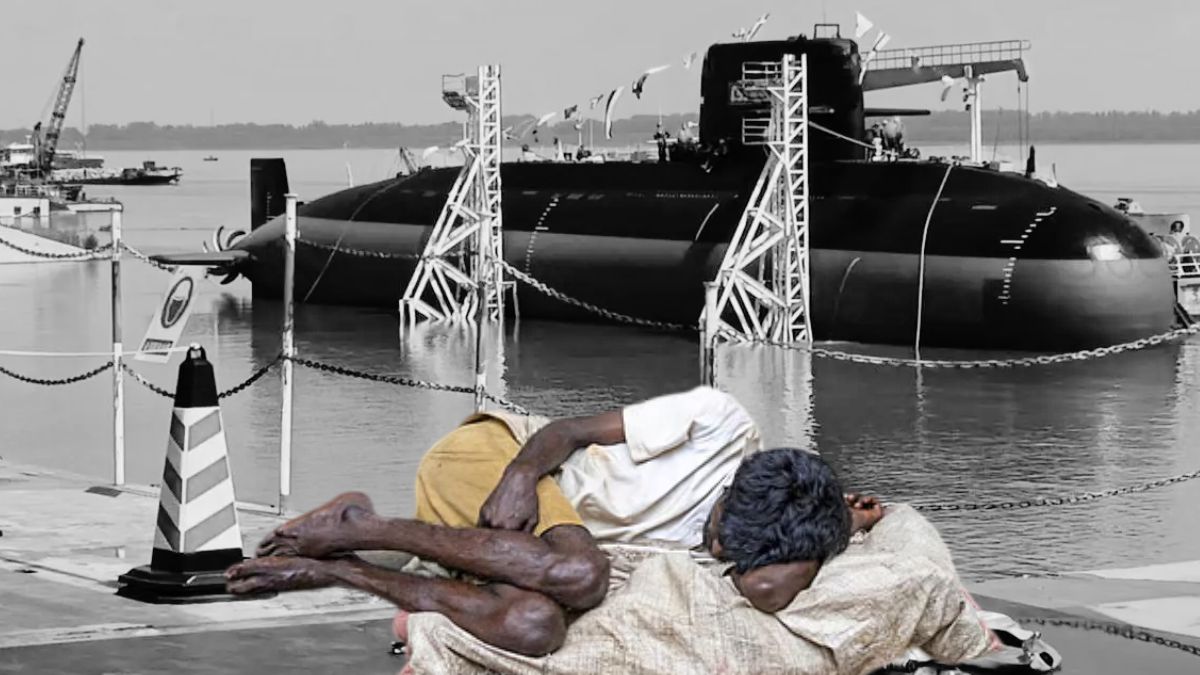On August 15, 2025, Pakistan celebrated the launch of its third Hangor-class submarine at Wuhan’s Wuchang Shipyard in China. Officials described the event as a milestone for the Pakistan Navy, showcasing a modern submarine with air-independent propulsion (AIP) and advanced combat systems. For Islamabad’s naval echelons, the Hangor deal represents prestige, deterrence, and proof of partnership with China.
Yet for millions of Pakistanis at home, the contrast is striking. At a time when nearly half the country struggles to afford basic food, billions of dollars are being poured into submarines that will take years to be fully operational. The real debate is not whether the Hangor makes Pakistan safer at sea, but whether it makes the population more vulnerable on land.
How severe is Pakistan’s food crisis?
The numbers are stark. The World Bank reported in 2024 that 42.3% of Pakistan’s population lives below the poverty line. According to the World Food Programme, 82% of families cannot afford a healthy diet, and almost half of monthly household expenditure goes to food. Wheat, sugar, and cooking oil prices have climbed relentlessly, placing daily staples out of reach for ordinary citizens.
Even as the International Monetary Fund extends loan packages to stabilise Pakistan’s finances, austerity measures have made electricity and fuel more expensive, worsening the strain on household budgets. For the average Pakistani family, survival means rationing meals and cutting back on essentials.
What does the Hangor project cost?
The Hangor deal is Pakistan’s largest-ever naval procurement programme, valued at several billion dollars. The contract signed in 2015 covers eight submarines, with four being built in Wuhan and four at Karachi Shipyard and Engineering Works under a transfer-of-technology agreement.
Beyond the headline price tag, Pakistan must also fund spares, training, infrastructure, and long-term sustainment. These costs are not one-time outlays—they will continue for decades, binding Pakistan to Chinese suppliers for engines, sensors, and system upgrades. Every rupee spent on keeping the Hangors at sea is a rupee not available for food subsidies, education, or health care.
Can Pakistan afford both guns and bread?
In theory, defence and development can proceed side by side. In practice, Pakistan’s fiscal position leaves little room. Debt servicing absorbs a major share of the budget. Defence allocations continue to grow, with spending for 2025–26 reportedly up by about 20%. At the same time, subsidies for food and energy are cut back under International Monetary Fund conditionality.
This means that Pakistanis are asked to sacrifice daily necessities while watching their leaders unveil new submarines abroad. The symbolism of the Hangor is meant to reassure citizens of strength at sea, but the reality at home is empty plates and darkened homes.
What is the real national security threat?
Security cannot be measured only in torpedoes and sonar. For a country where nearly half the population is poor, and where hunger and malnutrition stunt future generations, true national security begins with food security.
The debate is therefore not academic. It is a choice: whether to spend scarce billions on platforms that may never alter the strategic balance against India, or to invest in wheat procurement, education, and grid stability. Submarines can symbolise prestige, but they cannot feed children.
